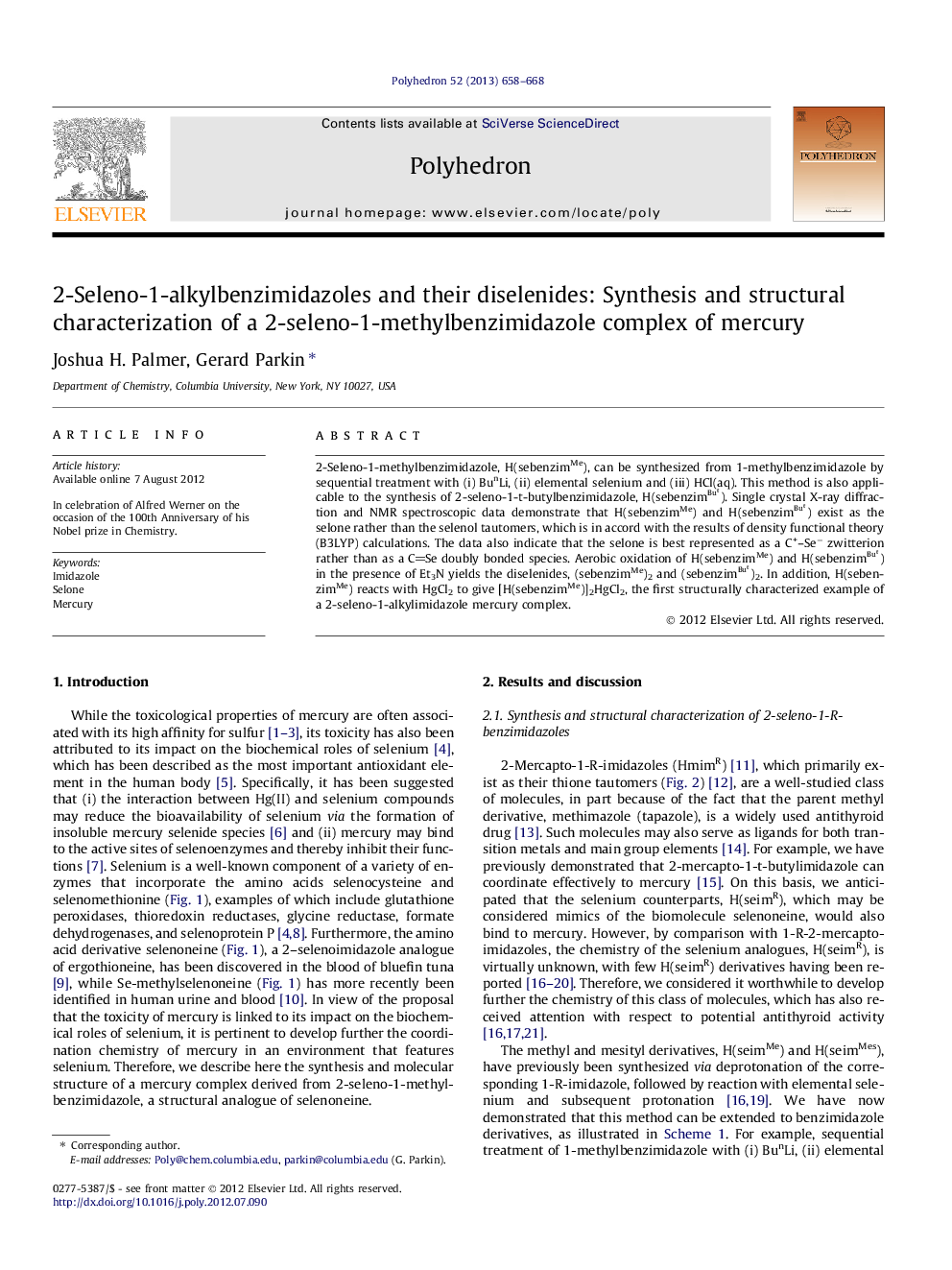| Article ID | Journal | Published Year | Pages | File Type |
|---|---|---|---|---|
| 1336997 | Polyhedron | 2013 | 11 Pages |
2-Seleno-1-methylbenzimidazole, H(sebenzimMe), can be synthesized from 1-methylbenzimidazole by sequential treatment with (i) BunLi, (ii) elemental selenium and (iii) HCl(aq). This method is also applicable to the synthesis of 2-seleno-1-t-butylbenzimidazole, H(sebenzimButsebenzimBut). Single crystal X-ray diffraction and NMR spectroscopic data demonstrate that H(sebenzimMe) and H(sebenzimButsebenzimBut) exist as the selone rather than the selenol tautomers, which is in accord with the results of density functional theory (B3LYP) calculations. The data also indicate that the selone is best represented as a C+–Se− zwitterion rather than as a CSe doubly bonded species. Aerobic oxidation of H(sebenzimMe) and H(sebenzimButsebenzimBut) in the presence of Et3N yields the diselenides, (sebenzimMe)2 and (sebenzimButsebenzimBut)2. In addition, H(sebenzimMe) reacts with HgCl2 to give [H(sebenzimMe)]2HgCl2, the first structurally characterized example of a 2-seleno-1-alkylimidazole mercury complex.
Graphical abstract2-Seleno-1-R-benzimidazoles (R = Me, But), H(sebenzimR), can be synthesized from 1-R-benzimidazole by sequential treatment with (i) BunLi, (ii) elemental selenium and (iii) HCl(aq). Aerobic oxidation of H(sebenzimR) in the presence of Et3N yields the diselenide, (sebenzimR)2, while reaction of H(sebenzimMe) with HgCl2 gives [H(sebenzimMe)]2HgCl2, the first structurally characterized example of a 2-seleno-1-alkylimidazole mercury complex.Figure optionsDownload full-size imageDownload as PowerPoint slide
